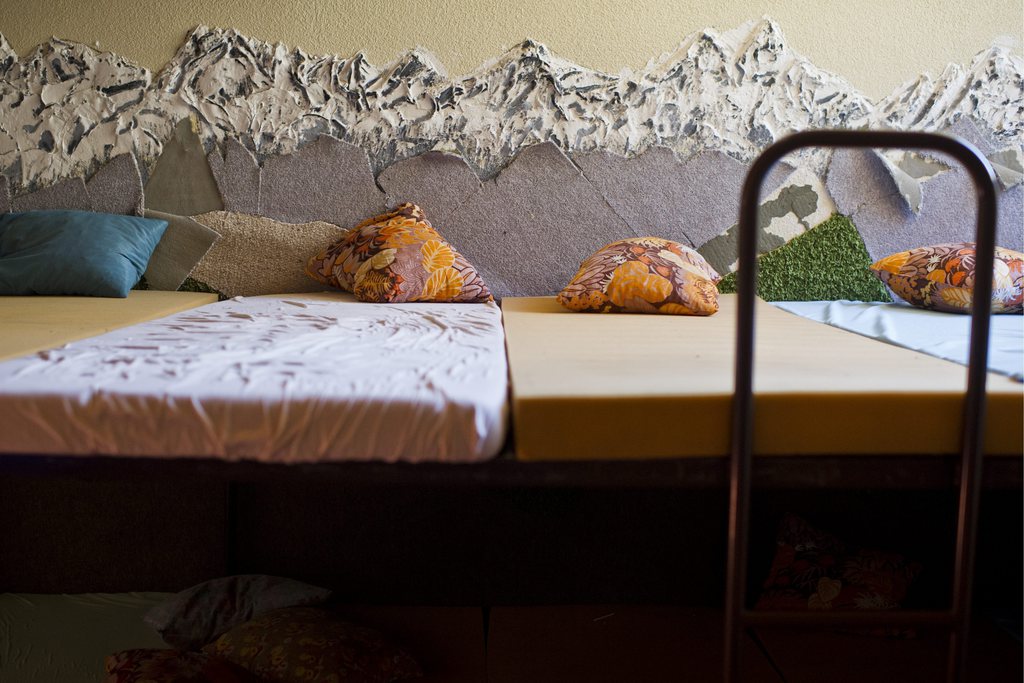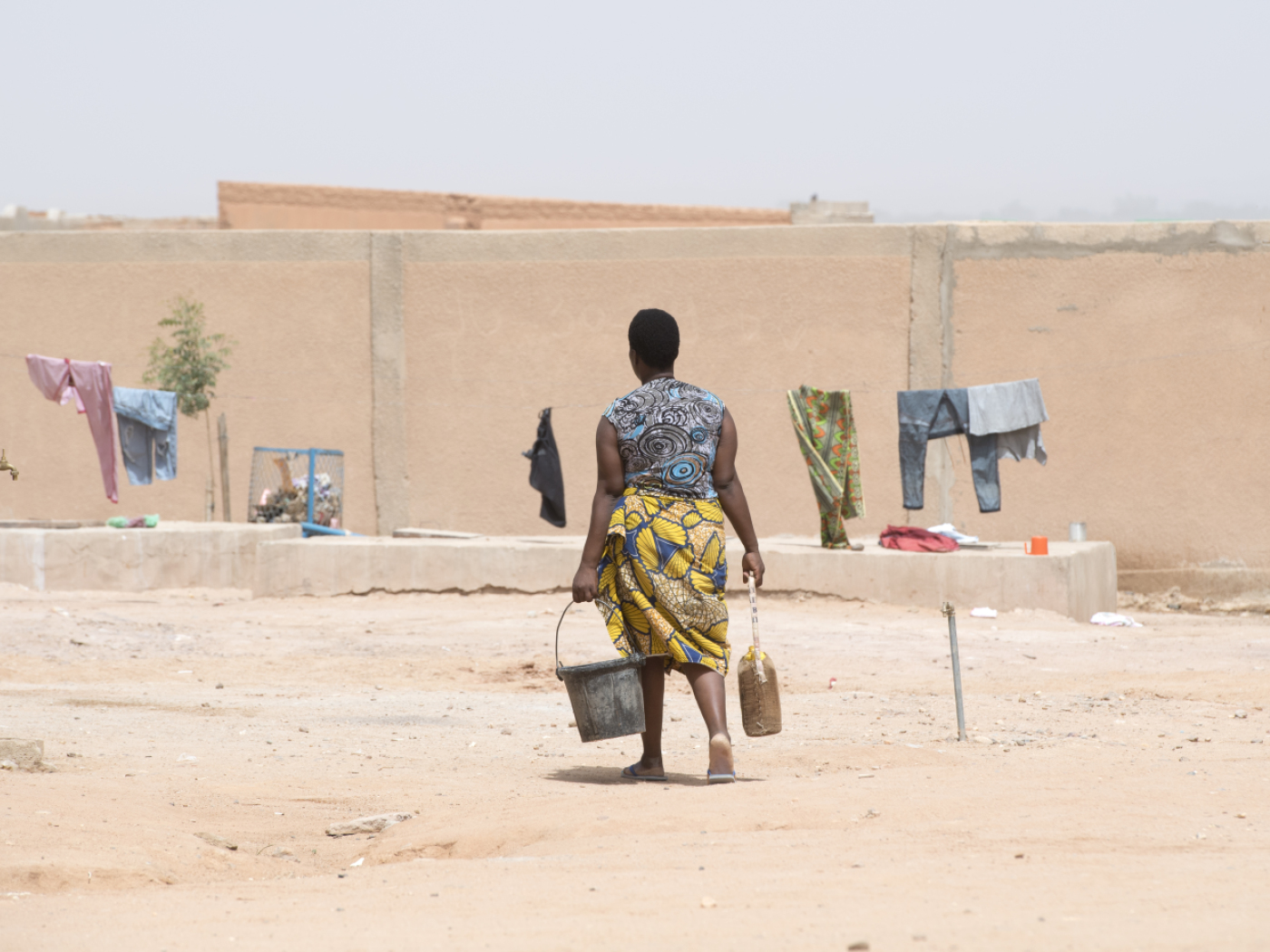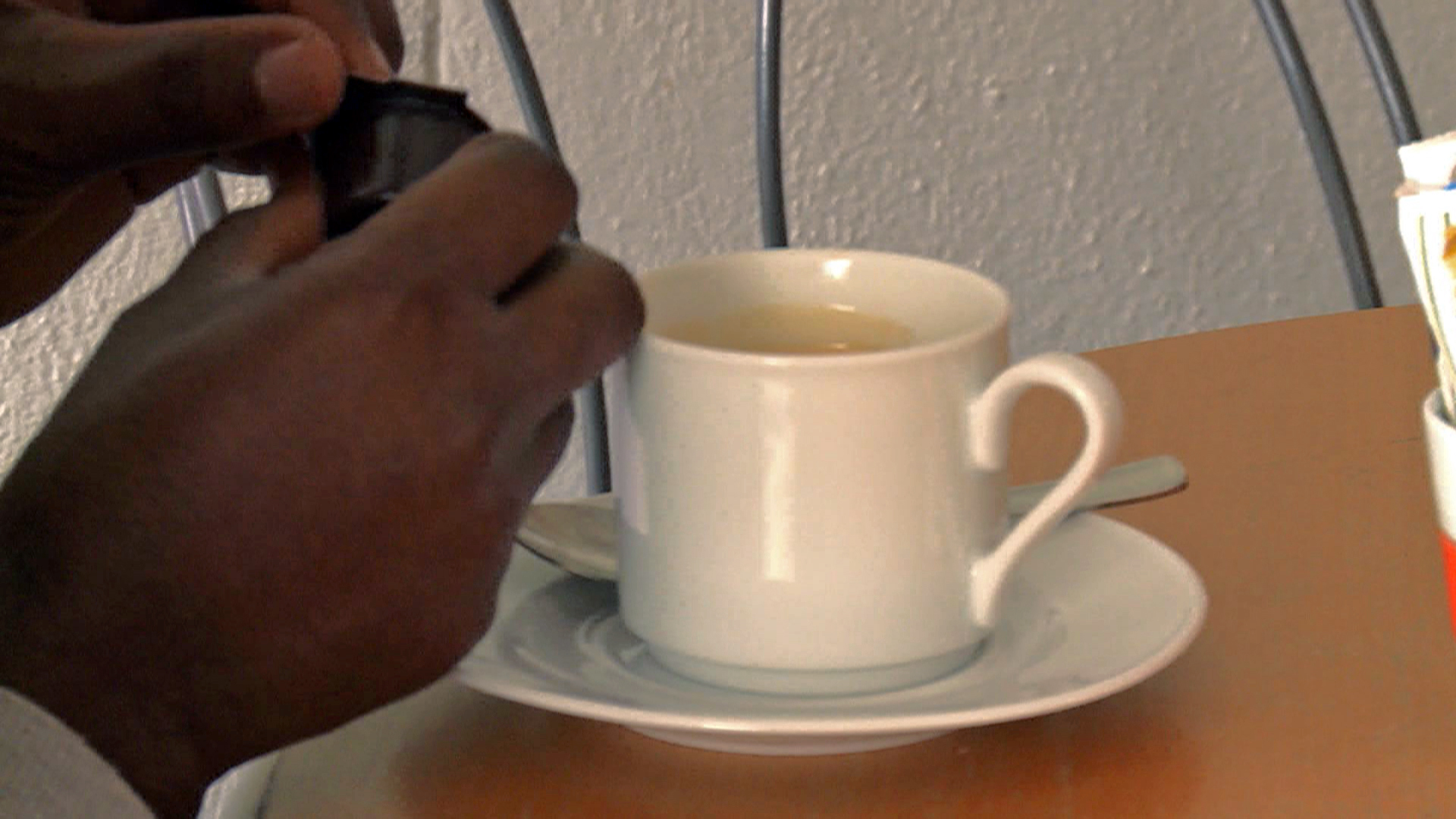Asylum seekers – a view from the inside

Europe should rethink its criteria for immigration, according to a worker at an asylum seeker reception centre on the Swiss-Italian border, which deals with almost 5,000 applicants a year.
“Over the past few years the type of people seeking asylum has changed radically. Today they are no longer political refugees in the strict sense. Most come to Europe in search of work and to improve their standard of living.”
So says Margherita (not her real name), who has been working in the centre at Chiasso for nine years.
“That has changed our work drastically. Earlier, we were able to offer protection to people who were being persecuted, for example in a dictatorship. Today we’re practically helpless in the face of this stream of migrants seeking work.”
Margherita has seen thousands of asylum seekers over the years. In the first eight months of this year alone, 3,147 people travelled through the centre. Most came from Nigeria (777), Tunisia (688) and Morocco (243).
She got to know many of the asylum seekers personally in the process of finding out how and why they came to Switzerland. She handles the first interviews, in which the administrators of the Federal Migration Office evaluate whether an application for asylum can even be considered.
swissinfo met Margherita and her co-workers Pablo und Gabriele (names also changed) at the beginning of October. They all wanted to remain anonymous – “we don’t want to end up being criticised” – to allow them to speak freely over the problems of migration and their daily work.
Stressful work
The asylum centre in Chiasso has had to handle an onslaught of applicants over the years with very modest resources. The 184 available beds are always full, and the employees are constantly under pressure.
“We carry out up to four interviews a day; often it’s like being in water up to our necks,” Gabriele said. “Sometimes the stress is bearable, but there are times when the attacks by the media and the pressure from politicians are almost too much to handle.”
“You have to have a strong backbone to do this work,” Margherita added.
This Monday, too, is anything but quiet. Over the weekend 60 migrants have travelled illegally over the border. A place for them to stay has to be found as quickly as possible.
Since the opening of new migration routes in connection with the Arab Spring in 2011, there has been a massive increase in the number of asylum seekers in Switzerland. An estimated 30,000 applications are expected this year, almost twice as many as two years ago (15,567).
In terms of applications per number of inhabitants, Switzerland is in fourth place in Europe, behind Malta, Luxembourg and Sweden.
“Illegal pursuits”
Most applications in Switzerland are rejected, however. In 2011, 80 per cent of applicants were not given a hearing, because according to law, poverty and unemployment are not grounds for recognition.
“That could make you think that immigration for economic reasons plays only a minor role. But the opposite is true: the lack of jobs is a tragedy, and Europe should rethink its criteria for immigration,” Pablo believed.
Although Swiss asylum law has been tightened several times in the past few years, Switzerland is rather helpless in the face of this new category of migrants.
“In comparison with refugees, who are guaranteed a certain level of protection by the state, these migrants often plunge into illegal pursuits and travel back and forth between countries. When they’re stopped at the border, they have almost no choice other than to apply for asylum. Although this is actually the wrong way,” he said.
Increasing frustration
In theory, the asylum centre in Chiasso – like the other four centres in Switzerland – should handle all phases of an asylum procedure within 90 days, from the medical evaluation to the in-depth hearing to the decision on whether to grant asylum.
The reality is a little different. On average, in the first half of 2012 an asylum seeker had to wait almost six months (176 days) for a decision. In the meantime, the applicants are parcelled out to the cantons.
An asylum centre has thus become a sort of “distribution centre”. “The asylum seekers come by with their burdens, but we aren’t able to look in detail into any of them. Everything hangs in the air,” Margherita said.
In addition, since the beginning of the year, 80 per cent of cases are decided in Bern, the headquarters of the Federal Migration Office.
“On the one hand it naturally takes the pressure off us, because we’re not responsible for the fate of a human being; on the other hand it sort of eliminates the meaning in our work. And that’s a pity,” she said.
Lies and truth
The employees of the asylum centre in Chiasso are generally limited to conducting initial interviews: first name, last name, place of birth, reason for fleeing. The list of questions is long, and leaves no leeway for the applicants or the examiners. The form must be filled out and the information painstakingly compiled.
This hearing cannot be considered a true interview. Often it’s a mixture of lies and truths.
“I understand the scepticism of many asylum seekers. If they were to be posed this many questions by the authorities in their home countries, it wouldn’t be a good sign,” Pablo said.
“But I find many of their complaints unacceptable. For example, that they aren’t given enough money or that the beds are uncomfortable. They’re here of their own free will; no one is making them stay. I’m not a priest or a social worker or a policeman.”
Difficult environment
The employees of the Chiasso asylum centre are protected as civil servants. But the political pressure, and the impatience of the Swiss people and the local authorities, take their toll.
The crimes committed by some of the asylum seekers, and the political instrumentalisation of the theme, often portray the migrants in a bad light. And this in spite of the fact that attempts are constantly being made to improve their integration.
“Foreigners have become Public Enemy Number One. The debate focuses on the difficult cases, without looking at the overall issue,” Gabriele said.
“The municipalities pass the hot potatoes back and forth, exactly like the European states. And as the pressure builds at the borders, the politicians find it difficult to keep in step.”
Swiss politics on issues of asylum is based on the Geneva Convention, which was ratified by the government in 1955. Since then, Switzerland has agreed in principle to grant asylum to refugees.
Refugees are defined in the asylum law as persons “who are subjected to serious handicaps in their home country or in the country where they last lived, due to their race, religion, nationality, membership in a particular social group, or their political views.” Poverty and joblessness in the country of origin are not sufficient grounds for refugee status.
Most asylum seekers are handled in the five Swiss Reception and Procedure Centres in Chiasso, Basel, Kreuzlingen, Vallorbe and Altstätten.
In recent years, Switzerland has tightened its asylum law. It has become more difficult to be recognised as a refugee and to be granted asylum.
In October 2012, parliament decided among other things that conscientious objectors (often from Eritrea) are no longer eligible for asylum. In addition, it is no longer possible to submit an application for asylum in a Swiss embassy abroad.
Switzerland has also voiced its support to the demand made by six major EU members to reintroduce so-called Schengen visa requirements for citizens of Serbia, Montenegro, Macedonia, Bosnia and Albania. The Swiss have already introduced a 48-hour asylum procedure for the first three countries.
Positive decision: An asylum seeker who is recognised as a refugee receives a B temporary residence permit and five years later a C permanent residence permit. In 2011, refugee status was awarded to 3,711 people; the total number of applications for asylum was 22,551.
Provisional acceptance: People whose applications for asylum are not considered but who are unable to return to their country of origin due to war or a violation of the international convention can reside temporarily in Switzerland with an F permit. In 2011, 3,070 people received an F permit and 3,248 were required to give it up and leave Switzerland.
Non-entry decision: Under some circumstances an application for asylum is automatically rejected. The applicant must leave the country. In 2011, this was the case for half of the applicants. There can be various reasons for a non-entry decision:
– No identification documents were provided.
– The applicant already applied for asylum in another country subscribing to the Schengen/Dublin accord.
– The applicant comes from a country which the Swiss government judges to be safe. The list of safe countries is continually updated. In 2009, Kosovo, Serbia and Burkina Faso were among the countries added.
(Translation from German by Jeannie Wurz)

In compliance with the JTI standards
More: SWI swissinfo.ch certified by the Journalism Trust Initiative










You can find an overview of ongoing debates with our journalists here . Please join us!
If you want to start a conversation about a topic raised in this article or want to report factual errors, email us at english@swissinfo.ch.